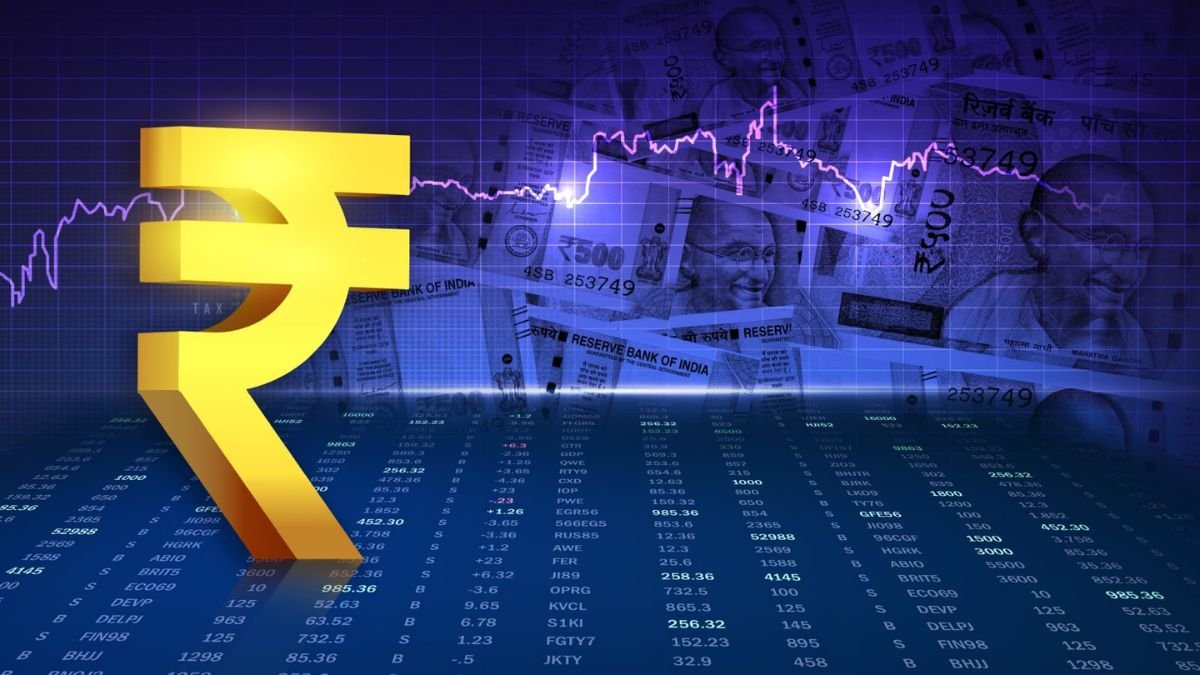Finance Minister Nirmala Sitharaman delivered the Union Budget to the Lok Sabha on Wednesday. Because the next Lok Sabha elections are scheduled for April/May 2024, this Budget is critical. This Union Budget, like the two preceding it, was presented in the absence of physical documents. There has been a flurry of commentary from experts and analysts around the world.
Consider the following responses as examples.
Rajat Agrawal, President and Founder of Barista
The Union Budget 2023 has been released, but hopes for a few direct SOPs, particularly in the area of input tax credit, have been dashed. We see this as a small window of opportunity that can benefit the retail sector through increased spending, so we’re keeping an optimistic outlook on measures to put more money in people’s pockets through tax cuts.
Anirban Mukherjee, CEO of PayU India,
The Indian government’s Budget 2023 is a positive step toward enhancing the fintech ecosystem’s long-term growth potential in the face of rising global headwinds. India’s new National Financial Information Registry, streamlined Know Your Customer procedures, and adoption of the Permanent Account Number as the common business identifier will benefit fintechs. The government’s commitment to cutting-edge technologies such as AI and 5G will be a welcome boost to our country’s nascent digital infrastructure. PayU India is pleased to see the initiatives outlined in Budget 2023, and we look forward to contributing to financial inclusion through our digital payments and credit businesses.
Divya Gokulnath, author and co-founder of BYJU
By emphasising digitalization and formalisation, the Budget invests in digital public infrastructure that will position India for long-term growth and international competitiveness. The establishment of Prime Minister’s Schools for Rising India, the hiring of 38,800 new teachers, and the establishment of a National Digital Library for Children all indicate that the education sector is a high priority for investment. The emphasis on teacher education and innovative pedagogy will ensure that the quality of education in India continues to improve as a result of these programmes. With this budget, India will be better able to compete on the international stage by relying on its own resources.
Finfluencer and CPA Shreya Jaiswal is a woman.
Given the country’s high inflation rate, the global recession, the post-pandemic recovery, and the upcoming 2024 election, it’s safe to say that all eyes were on today’s Budget speech. In the fiscal year 2024 spending plan, we have a model populist budget. Despite the global recession, the Indian government is betting big on India emerging as a superpower, and this can be seen in a variety of ways, including the promotion of MSMEs to continue driving the start-up ecosystem in India and the preference for domestic tourism over international tourism. The proposals to change direct taxes received the most support from both the Parliament and the general public. In anticipation of the upcoming elections, the personal tax proposals almost certainly target the middle class. For the past five years, the government has been closely monitoring middle-class budget expectations and has finally met them all at once. I can imagine the middle class celebrating the announcement of a tax rebate of Rs 7 lakh, up from Rs 5 lakh, an increase in the basic tax exemption limit to Rs 3 lakh, up from Rs 2 lakh, and an increase in the exemption limit on leave encashment from Rs 3 lakh to a whopping Rs 25 lakh. Although direct tax revenue is declining, Goods and Services Tax (GST) revenue is expected to rise as the public gains access to previously untaxed resources. Only time will tell how this affects inflation.
Sunil Gandhi, Chief Executive Officer of JLNPhenix Energy
It’s heartening to see so many initiatives promoting environmentally friendly fuel, energy, transportation, and machinery. The most recent budget also included energy-efficiency policies for the entire economy, including the electric vehicle (EV) and lithium-ion battery manufacturing sectors. Because of these environmentally friendly measures, more people will be able to find work, and the economy’s carbon footprint will be reduced. The Ministry of Petroleum and Natural Gas has set aside Rs 35,000 crores (approximately $5 billion) for priority clean energy capital investments, including the transition to a zero-carbon economy, net-zero emissions, and the assurance of reliable energy supply. The government’s push to replace old, polluting vehicles with new, ideally electric vehicles, is also encouraging.
Sathvik Vishwanath, co-founder and current CEO of Unocoin
Ten months ago, new income tax laws for cryptocurrency were implemented, and TDS was implemented seven months ago. The government requires data covering at least two full fiscal years in order to analyse and make changes. As a result, no major developments in the cryptocurrency sector were expected. Unocoin has so far provided the government with preliminary data on transactions and the impact of the new tax regime on the cryptocurrency industry. We may see some changes in the future, perhaps in the next Budget.
Sachin Gaikwad, CEO and co-founder of Buildd
During Covid, India’s digital infrastructure kept most businesses running, and the country was able to mitigate its effects with the help of banks that provide digital services and maintain the flow of money and commerce. Data and files shared between platforms can be retrieved automatically with the help of the persistent identifier PAN. Users will value an integrated system between federal and state agencies because it eliminates the need to submit the same information multiple times, ensures the authenticity of submitted documents, and speeds up request processing. The expansion of digital payment options reflects the Indian economy’s increasing formalisation. Businesses relied heavily on the work of those in the financial technology and financial technology infrastructure industries to keep the wheels on the bus.
Prof. Aman Mittal, Vice President of Learning and Performance at LPU
The education budget proposal from our Finance Minister is a bold step toward strengthening the field. In today’s announcement, Sitaramanji mentioned a number of new initiatives, including the critical establishment of artificial intelligence labs at the institution and the nationwide rollout of 100 labs for testing 5G services. If India is to become a global superpower, it must invest in cutting-edge technology. The government would benefit from investing in youth training in emerging technologies such as 5G services and AI. The new programme, dubbed “Kaushal Vikas Yojana 4.0,” will provide fundamental competencies to not only the youth of India, but also the entire industry. Along with the announcement of the online training platform, this is another innovative step that will help educate a large number of young people in a short period of time. Although its impact on result orientation and the improvement of skill set components remains to be seen, it will undoubtedly provide the education sector with the necessary impetus.
BankBazaar.com Adhil Shetty, CEO
Those with a high net worth who will be affected by the hefty surcharge can rejoice. Individuals with a middle-income are also included. People are no longer required to pay taxes on income up to Rs 7.5 lakh per year. The mood of taxpayers in those income brackets will be lifted. The new system may result in tax savings ranging from Rs 7 to Rs 15 lakh. The onus is now on taxpayers to determine whether or not staying in the old system truly benefits them. Going forward, the new regime will be the de facto standard. The old regime, with its brackets still in place in 2013, is unlikely to be improved anytime soon, making compliance increasingly difficult. To determine which taxation system is best for you, use an online tax calculator. With the exception of the newly introduced standard deduction, all deductions from the old system have been eliminated in the new system. While deductions for home loans, insurance, and provident funds are still permitted under the old regime, the’real’ rates are too high due to inflation; without bracket enhancements, the 30% rate effectively becomes the 40% rate.
Jaideep Arora, CEO of Sharekhan
Capital expenditure increases, measures to stimulate the manufacturing sector (particularly small and medium-sized enterprises), and a focus on growing high-employment industries such as travel and hospitality, new technology, and renewable energy are just a few examples of how the Union Budget delivered. The middle-class aid follows a similar pattern. Meanwhile, the Finance Minister has remained steadfast in his commitment to fiscal consolidation. Both the fiscal deficit target of 5.9% of GDP and the gross government borrowing plan of Rs 15.43 lakh crore are reasonable and in line with our and the market’s expectations. The capital gains tax and STT regimes have not been altered. To summarise, it is a fair budget that meets everyone’s needs while avoiding any major issues.
Abhay Bhutada is the CEO of Poonawalla Fincorp.
The presentation of the Union Budget for 2023-2024 by Nirmala Sitharaman demonstrates the government’s commitment to improving people’s lives and the country’s economic situation. By emphasising ‘janbhagidari’ through’sabka saath, sabka prayas’ and seven pillars such as green growth, youthpower, and infrastructure investment, this budget lays the groundwork for a technology-driven and knowledge-based economy. The new tax slabs, which have a maximum marginal rate of 39% and an income rebate limit of Rs 7 lakh, give the middle class more discretionary income to spend, which boosts the national economy. It is heartening to see the government’s commitment to and focus on the micro, small, and medium-sized enterprise sector. The revised credit guarantee scheme will have a significant impact on the MSME sector, as will the reduction of compliances. The National Financial Information Registry, as well as digitization and enhanced Digilocker services, will improve transparency in the financial security industry. The budget provides Indians with opportunities to live better lives in the future. We look forward to seeing it implemented effectively and contributing to the country’s position as a world leader in the financial sector.
Banwari Lal Sharma, Chief Executive Officer and Founder of CarTrade Tech
Nirmala Sitharaman’s Union Budget 2023-2024 is forward-thinking, frugal, and growth-driven, with the goal of encouraging people to save. It’s a “green budget” for the automotive and transportation sectors. The sustainability measures announced thus far, particularly those pertaining to green hydrogen and other energy sectors, will aid the government’s goal of carbon neutrality by 2070. The increased capital expenditure on energy transition is likely to boost investment and skill development in a green economy. Customs duty reductions on capital goods for lithium battery manufacturing will hasten EV adoption, and viability gap funding for battery energy storage systems is also likely to produce necessary infrastructure. In addition to the central government’s support for vehicle replacement, it is encouraging to see an increase in infrastructure spending, the construction of 50 new airports and heliports, and the development of 100 transportation infrastructure projects. All of these factors should lead to an increase in the demand for and use of automobiles.
The Hindustan Herald Is Your Source For The Latest In Business, Entertainment, Lifestyle, Breaking News, And Other News. Please Follow Us On Facebook, Instagram, Twitter, And LinkedIn To Receive Instantaneous Updates. Also Don’t Forget To Subscribe Our Telegram Channel @hindustanherald









































